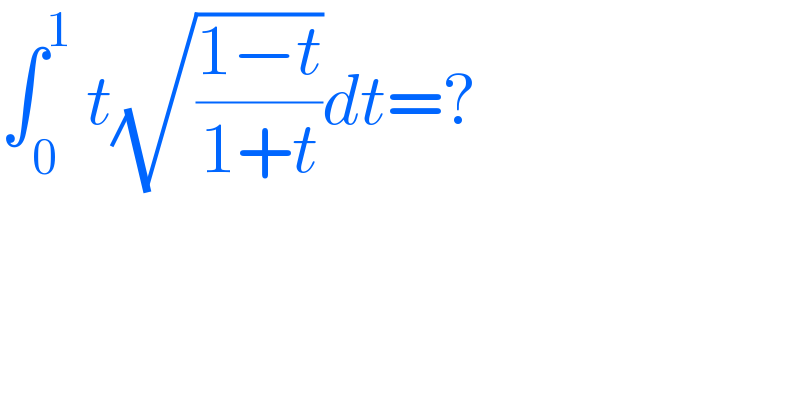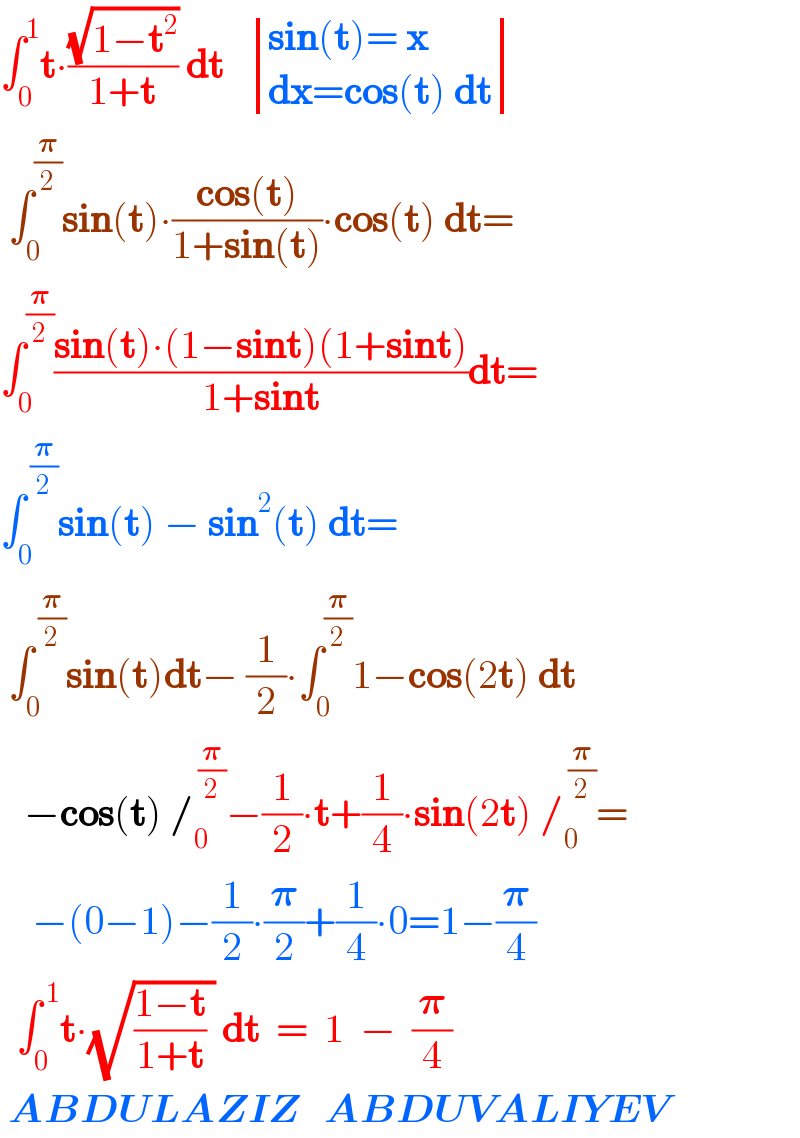
Question and Answers Forum
Question Number 182726 by SANOGO last updated on 13/Dec/22

Commented by CElcedricjunior last updated on 13/Dec/22
![∫_0 ^1 t(√((1−t)/(1+t)))dt=k posons (√((1−t)/(1+t)))=x ((1−t)/(1+t))=x^2 =>1−t=tx^2 +x^2 =>t=((1−x^2 )/(1+x^2 )) dt=((−4x)/((1+x^2 )^2 ))dx=>qd: { ((t=0)),((t=1)) :}=> { ((x=1)),((x=0)) :} k=∫_0 ^1 ((4x(1−x^2 ))/((1+x^2 )^3 ))dx=∫((−4x(x^2 +1)+8x)/((1+x^2 )^3 ))dx =∫_0 ^1 ((−4x)/((1+x^2 )^2 _ ))dx+∫_0 ^1 ((8x)/((1+x^2 )^3 ))dx =[(2/(1+x^2 ))]_0 ^1 −[(2/((1+x^2 )^2 ))]_0 ^1 =1−2−(1/2)+2 k=(1/2) ======================= ..........le celebre cedric junior........673804515 ====================================](Q182735.png)
Commented by ARUNG_Brandon_MBU last updated on 13/Dec/22

Commented by ARUNG_Brandon_MBU last updated on 13/Dec/22

Commented by SANOGO last updated on 13/Dec/22

Answered by SEKRET last updated on 13/Dec/22

Answered by ARUNG_Brandon_MBU last updated on 13/Dec/22
![∫_0 ^1 t(√((1−t)/(1+t)))dt=∫_0 ^1 t∙((1−t)/( (√(1−t^2 ))))dt =∫_0 ^1 (t/( (√(1−t^2 ))))−∫_0 ^1 (t^2 /( (√(1−t^2 ))))dt =−[(√(1−t^2 ))]_0 ^1 −∫_0 ^(π/2) sin^2 θdθ =1−(1/2)∫_0 ^(π/2) (1−cos2θ)dθ=1−(π/4)](Q182730.png)
